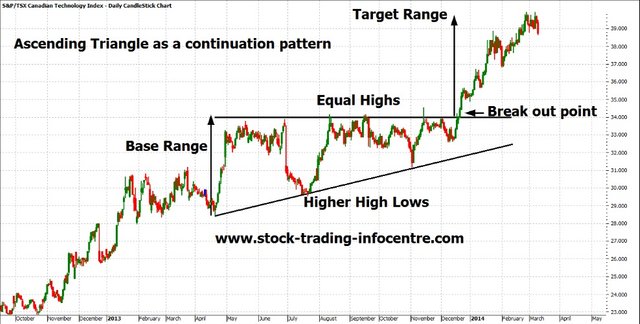Who Needs Ratio Analysis, Odd-Lot Theory and Technical Analysis?
Let’s pretend that someone has recently finished their BA degree and has decided to become a financial analyst…
No part of this publication may be reproduced, stored in or introduced into a retrieval system, or transmitted, in any form or by any means (electronically, mechanical, photocopying, recording or otherwise), without the prior written permission from me.
All rights reserved.

Image Source
Now it is time to become more familiar with various investment management fundamentals in order to brush up skills to pay the bills!
We have decided to work together to better understand ratio analysis, odd-lot theory and technical analysis.
Ratio Analysis

Image Source
Ratio Analysis can be used to compare the financial statements for two companies and is usually done with companies within the same industry to gauge performance.
Ratio analysis can be used for both the short-term and long-term.
Here is a list of a few of the several different ratios that can be examined:
- Current Ratio,
- Debt to Equity Ratio,
- Goss Margin Percentage,
- Net Profit Margin and
- Return on Equity Percentage
These are a few of the more commonly used ratios.
The advantage of using ratios is that even if the companies are different sizes the analyst is still able to make meaningful comparisons.
Ratio analysis is meaningful to a financial analyst because it gives them a means to measure the performance of a company that could be a potential investment option.
Taking a closer look at a few of these ratios:
Current Ratio can be used as a “good measure of short-term liquidity” (CTU Financial, 2015).
To calculate Current Ratio you divide the current assets by the current liabilities that are found on the Balance Sheet.
A Current Ratio that has decreased may indicate a company may be less liquid. Liquidity is important because it measures “a company's ability to pay off its short-term debt obligations.”
The Debt to Equity Ratio shows how a company may have financed its growth with debt if the ratio is high.
This is taking a look at how much debt (borrowed money) a company has and comparing it to how much equity (“degree ownership in any asset after all debts associated with that asset are paid off”)
Return on Equity Percentage is useful for investors in understanding the potential for return of investment by evaluating the stock's past performance.
Odd-Lot Theory

Image Source
The odd-lot theory is based on the notion that “if you do the opposite of what the dumbest person in town is doing, it is likely to be right” (Ryland, 2011).
When it comes to investing, financial analyst consider that when amateur investors who trade extremely small amounts of stock, called “odd lots” , decide to buy a certain stock, then the investor decides it is time to sell it and vice versa (Ryland, 2011).
This is probably what most all of us involved with cryptocurrency are doing, and by that I mean we are the odd-lot signal to the “real investors”.
This theory even goes so far to have created its own index that shows the ratio of “odd-lot sales to odd-lot purchases” (Ryland, 2011).
This theory is therefore used as a market predictor of what direction investors decide to move in response to the small time investments.
However, odd-lot theory is not considered a fundamental type of analysis.
Fundamental types of analysis, such as ratio analysis, however, do differ from a technical analysis. (Chan, 2013).
Technical Analysis

Image Source
Technical analysis is the study of historical price data to identify price trends and forecast price movements (Chan, 2013).
It is the analysis of price activities or patterns to identify trading opportunities and is used as an approach to financial investment (Chan, 2013).
Technical analysis is based on the general principle that history tends to repeat itself (Chan, 2013).
But we all know that there is NO GUARANTEE that this is the case…
Technical analysis states that all information is discounted in the price, that the result of such information causes the price to trend, and that price patterns tend to repeat (Chan, 2013).
What this implies is that the recurring price patterns can provide signs to what the future price might be at and what movements and trends we can anticipate to get there (Chan, 2013).
Thus, the way to trade equity and commodity, or in our case, cryptocurrency, is to identify patterns and signals that indicate the beginning of new trends (Chan, 2013).
Or check out the research that others have done:
For a great Technical Analysis of STEEM check out @ats-david and his post on STEEM Price Analysis – June 19, 2017.
To sum it all up, Technical analysis can be said to focus on the resulting trend and not on the reason for the market trend, whereas fundamental analysis is concerned with the economic and specific reasons for the price increase or decrease (Chan, 2013).
“A trading system built on technical analysis will give appropriate buy and sell signals based on pattern recognition with the objective of making the maximum amount of money, at minimum risk” (Chan, 2013).

Image Source
I think this is a wonderful and interesting time to be alive.
What do you think?
The future together is bright.
Join me.

See the latest adventures and creations from my wife Sarah on steemit! Coming Soon!
Also Check Out Some of My Previous Post:
Hey, before you go, I have a question for you, Are you interested in taking out a loan to consolidate debt?
If you use my Credible Referral link, you can get a cash bonus if you take out a loan.
It can be a Personal Loan or a loan to consolidate Student Loans.
Either way, if you use my link, it can be a "win-win" for us both by saving us money on interest and getting a little bit of money now!
Chan, J. (2013). The Financial Times Guide to Technical Analysis: How to Trade like a Professional. Harlow, England: Financial Times/ Prentice Hall.
Colorado Technical University. (2015). Financial Statement Analysis [MUSE]. Retrieved from Colorado Technical University Virtual Campus, FINC615-X-1504A-01: https://class.ctuonline.edu/CbFileShareCommon/ctu/FINC615/P1/Hub1/7666.pdf
Ryland, P. (2011). Investment an A-Z guide. London: Profile Books.
Gotta admit, kind of like the odd-lot theory. Fun extra tool to throw in the arsenal.
It is good to know and know that if "everybody is buying" then maybe you should be selling!